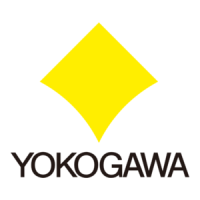
Do you have a question about the YOKOGAWA ProSafe-RS and is the answer not in the manual?
| Category | Safety Instrumented System (SIS) |
|---|---|
| SIL Rating | SIL3 |
| Programming Language | Function Block Diagram (FBD) |
| Communication Protocols | Ethernet/IP |
| Power Supply | 24 VDC (nominal), 19.2 to 30 VDC range |
| Certifications | IEC 61508, IEC 61511, ATEX |
Details requirements for installing the ProSafe-RS system, covering environment, power, and grounding.
Provides guidelines for safely transporting, storing, and installing the ProSafe-RS system.
Explains how to connect power, ground, and signal cables to system equipment.
Summarizes power consumption, in-rush current, and other electrical data.
Covers procedures for post-installation checks and preserving the operating environment.
Outlines crucial safety measures for product operation and modification.
Explains the meaning of various symbols used in the technical information for safety.
Details specific warnings and precautions for device installation and handling.
Covers general design, floor strength, structure, illumination, and specific environmental controls.
Details temperature, humidity, vibration, air purity, and electrical field requirements.
Specifies AC and DC power requirements, including voltage, frequency, and in-rush current.
Outlines requirements for protective and functional grounding systems.
Addresses electromagnetic, electrostatic, lightning, and ground potential noise.
Covers cable separation, distance, intersections, ambient temperature, and EMI measures.
Lists G3 environment-compatible products and outlines compatibility.
Details marine standard-compliant components and installation precautions.
Provides essential safety precautions for transporting ProSafe-RS system equipment.
Details the inspection process and precautions for unpacking equipment.
Specifies conditions and locations for storing ProSafe-RS system products.
Covers general installation procedures and checks before mounting equipment.
Guides on mounting devices in racks, including spacing and insulation.
Explains installation procedures and mounting for DIN rail devices.
Provides guidelines for installing components in Rittal cabinets for FIO systems.
Offers guidelines for installing N-IO system equipment in general-purpose cabinets.
Details recommended cable types, temperature ratings, and terminal connections.
Explains how to connect power using plugs or wiring and maximum cable lengths.
Provides instructions for connecting ground cables to ProSafe-RS equipment.
Illustrates power and grounding cable connections for various ProSafe-RS units.
Guides on connecting signal cables to I/O modules and terminal blocks.
Details signal connections for N-IO I/O units and base plates.
Explains Vnet/IP, ESB Bus, N-ESB Bus, and Optical ESB Bus cabling.
Summarizes power consumption, voltage, frequency, and heating values for equipment.
Provides actual in-rush current data for ProSafe-RS components upon power-on.
Lists the maximum current consumption for various FIO modules.
Lists the built-in and external fuse/breaker ratings for different equipment.
Outlines recommended replacement periods for hardware components.
Lists items to inspect before powering on to prevent dust or condensation contamination.
Outlines precautions for maintaining the proper operating environment after installation.